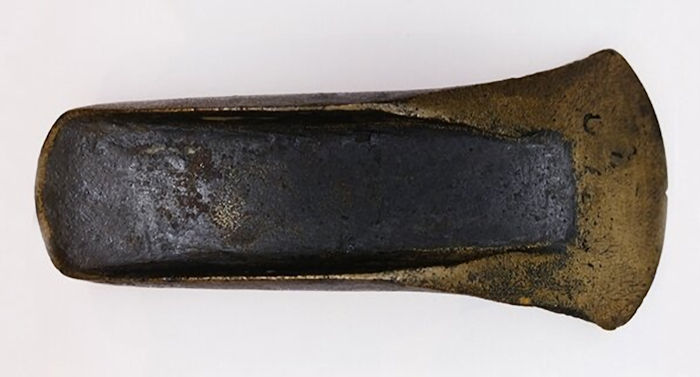Truth Behind Mysterious Ancient Metal Depositions Revealed By Scientists
Jan Bartek - AncientPages.com - In Bronze Age Europe, many bronze objects such as axes, swords and jewels were deliberately left at specific spots in the landscape. Ph.D. research by Leiden archaeologist Marieke Visser shows that these practices were expressions of people's relationship with the world around them. "It was a completely normal practice, which we shouldn't label as irrational."
Credit: Leiden University
Researchers have been trying since the 19th century to explain the motives behind selective metal depositions. But these are still shrouded in mystery. "Archaeologists have become stuck in very strict interpretation models," says Visser. "Certain criteria were drawn up and boxes ticked per find. The assumption was that there were religious and non-religious depositions. I find this approach problematic because the data often don't fit in these boxes. You can't simply project the modern idea of religion onto the Bronze Age."
Clear patterns
From a modern perspective it is illogical to throw away valuable objects, but thousands of years ago this was 'the most ordinary thing in the world," says Visser. "It seems to have been something you just did." Visser compares it with throwing coins in a fountain. "There you also deliberately throw away something of value at a certain place. You throw a coin in a fountain, not in the bin."
To gain a better understanding of these human actions, Visser focuses her research not on the motives, but rather on the actions themselves. "An incredible number of depositions have been found from throughout the Bronze Age. If you systematically research these, look at which object in which place, you discover the conventions. That shows that these objects weren't lost by accident. There are clear patterns. This was deliberate."
In the area where Visser did her research, metals did not occur naturally and were very valuable. "They had to be imported from far away. These trade networks were important. People wanted to express that their communities belonged to intraregional networks. Depositions were a way for people to relate to the world around them and their place within it."
Visser gives the example of a find in Denmark where one depot contained objects from Denmark, Central Europe and Great Britain. "It was actually a map of the networks and contacts people had at the time that is represented in that depot."
National borders
Visser studied an area (Denmark, Northwest Germany and the Northern Netherlands) that has never been studied before as a whole. "In the past studies were carried out within national borders. The finds in these three countries are very similar in nature. But they were looked at from different angles of interpretation, also from the country's history. This means similarities are lost."
See also: More Archaeology News
Visser has built up a database of finds dating from a long period and from a very wide area, which makes it easy to recognize similarities and patterns. "I hope that these data will also be used by archaeologists after me."
Written by Jan Bartek - AncientPages.com Staff Writer
More From Ancient Pages
-
 Medieval Warhorses Were Pony-Sized And Much Smaller Than Previously Thought
Archaeology | Jan 11, 2022
Medieval Warhorses Were Pony-Sized And Much Smaller Than Previously Thought
Archaeology | Jan 11, 2022 -
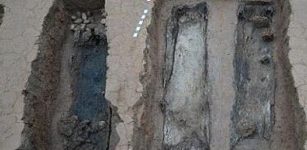 Large Collection Of 2,200-Year-Old Tombs With Boat Coffins Made Of Nanmu Wood, Unearthed In SW China
Archaeology | Feb 10, 2017
Large Collection Of 2,200-Year-Old Tombs With Boat Coffins Made Of Nanmu Wood, Unearthed In SW China
Archaeology | Feb 10, 2017 -
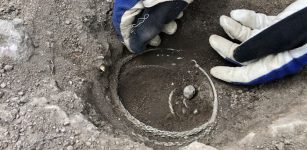 Wonderful And Unique Viking Silver Treasure Uncovered In Täby In Stockholm, Sweden
Archaeology | Nov 29, 2022
Wonderful And Unique Viking Silver Treasure Uncovered In Täby In Stockholm, Sweden
Archaeology | Nov 29, 2022 -
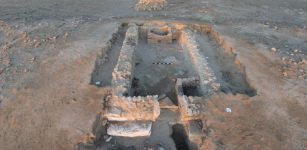 Unusually Arranged Skeletons And Artifacts Found Inside A 1,500-Year-Old Tomb In Berenice Troglodytica, Egypt
News | May 27, 2022
Unusually Arranged Skeletons And Artifacts Found Inside A 1,500-Year-Old Tomb In Berenice Troglodytica, Egypt
News | May 27, 2022 -
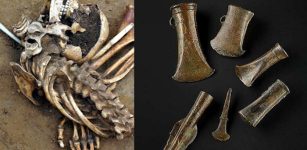 DNA Study Sheds New Light On Ancient Britain’s Language, Ancestry, Kinship, Milk
Archaeology | Dec 26, 2021
DNA Study Sheds New Light On Ancient Britain’s Language, Ancestry, Kinship, Milk
Archaeology | Dec 26, 2021 -
 On This Day In History: Vädersol Painting Depicting ‘Sun Dog’ Phenomenon Observed Over Stockholm – On Apr 20, 1535
News | Apr 20, 2016
On This Day In History: Vädersol Painting Depicting ‘Sun Dog’ Phenomenon Observed Over Stockholm – On Apr 20, 1535
News | Apr 20, 2016 -
 King Lud – Mysterious Founder Of London And His Connection To The Tuatha De Danann
Featured Stories | Oct 21, 2021
King Lud – Mysterious Founder Of London And His Connection To The Tuatha De Danann
Featured Stories | Oct 21, 2021 -
 Easter Island Secrets: Giant ‘Pukao’ Stone Hats Reveal That Rapa Nui People Were Not Warriors
Archaeology | Dec 22, 2017
Easter Island Secrets: Giant ‘Pukao’ Stone Hats Reveal That Rapa Nui People Were Not Warriors
Archaeology | Dec 22, 2017 -
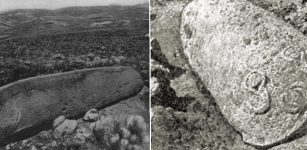 Mysterious 2000-Year-Old Carved Vishap Stone Monuments Of Armenia
Featured Stories | Dec 13, 2016
Mysterious 2000-Year-Old Carved Vishap Stone Monuments Of Armenia
Featured Stories | Dec 13, 2016 -
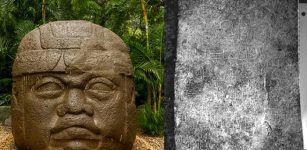 Mystery Of The Controversial Cascajal Block – Oldest Writing In The Americas
Artifacts | Oct 12, 2017
Mystery Of The Controversial Cascajal Block – Oldest Writing In The Americas
Artifacts | Oct 12, 2017 -
 Never-Before-Seen Amazon Rock Art Reveal People Lived With Giant Ice Age Animals
Archaeology | Dec 5, 2020
Never-Before-Seen Amazon Rock Art Reveal People Lived With Giant Ice Age Animals
Archaeology | Dec 5, 2020 -
 Nurarihyon: Powerful Demon Of Obscure Origin, Chief Of All Yokai
Featured Stories | Nov 6, 2024
Nurarihyon: Powerful Demon Of Obscure Origin, Chief Of All Yokai
Featured Stories | Nov 6, 2024 -
 Forgotten And Overgrown Step Pyramid Of Koh Ker – Ancient Memory Of The Khmer Empire
Featured Stories | Apr 19, 2017
Forgotten And Overgrown Step Pyramid Of Koh Ker – Ancient Memory Of The Khmer Empire
Featured Stories | Apr 19, 2017 -
 Just 7% Of Our DNA Is Unique To Modern Humans – We Are Not Much Different From The Neanderthals
Archaeology | Jul 27, 2021
Just 7% Of Our DNA Is Unique To Modern Humans – We Are Not Much Different From The Neanderthals
Archaeology | Jul 27, 2021 -
 Ancient Egyptians Knew About ‘Demon Star’ Algol’s Variability 3,000 Years Before Western Astronomers
Archaeology | Nov 13, 2018
Ancient Egyptians Knew About ‘Demon Star’ Algol’s Variability 3,000 Years Before Western Astronomers
Archaeology | Nov 13, 2018 -
 Mount’s Bay, Lyonesse, Langarroc: Legendary Submerged Lands And Buried Towns Of Cornwall
Featured Stories | Apr 21, 2022
Mount’s Bay, Lyonesse, Langarroc: Legendary Submerged Lands And Buried Towns Of Cornwall
Featured Stories | Apr 21, 2022 -
 Uplistsikhe Devastated By Genghis-Khan Hordes But Once City-Fortress Of Queen Tamar
Featured Stories | Apr 12, 2021
Uplistsikhe Devastated By Genghis-Khan Hordes But Once City-Fortress Of Queen Tamar
Featured Stories | Apr 12, 2021 -
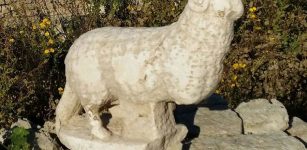 Impressive Marble Statue Of A Ram, An Ancient Christian Symbol For Jesus Discovered
Ancient Symbols | Dec 28, 2015
Impressive Marble Statue Of A Ram, An Ancient Christian Symbol For Jesus Discovered
Ancient Symbols | Dec 28, 2015 -
 Surprisingly Complex History Of Crocodiles – New Study
Evolution | Nov 23, 2023
Surprisingly Complex History Of Crocodiles – New Study
Evolution | Nov 23, 2023 -
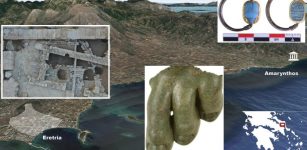 Sanctuary Of Amarysia Artemis, Amarynthos – New Valuable Finds By Greek-Swiss Team
Archaeology | Sep 26, 2022
Sanctuary Of Amarysia Artemis, Amarynthos – New Valuable Finds By Greek-Swiss Team
Archaeology | Sep 26, 2022

